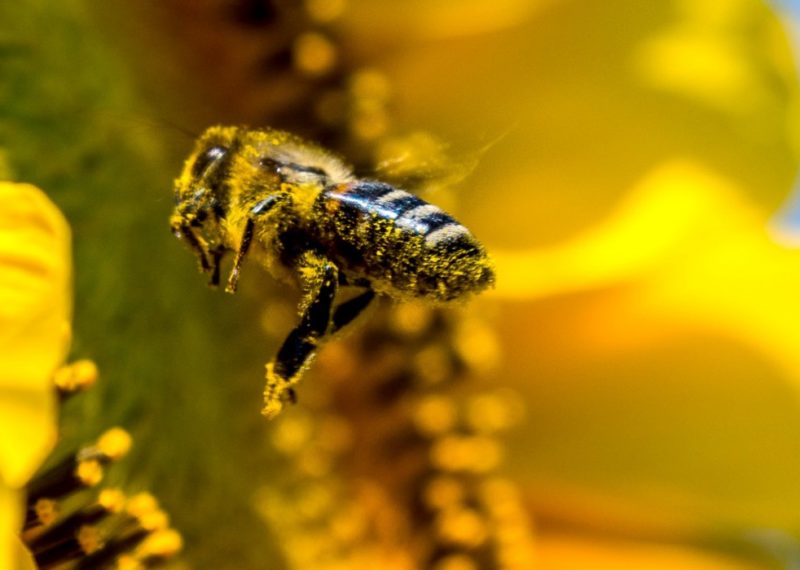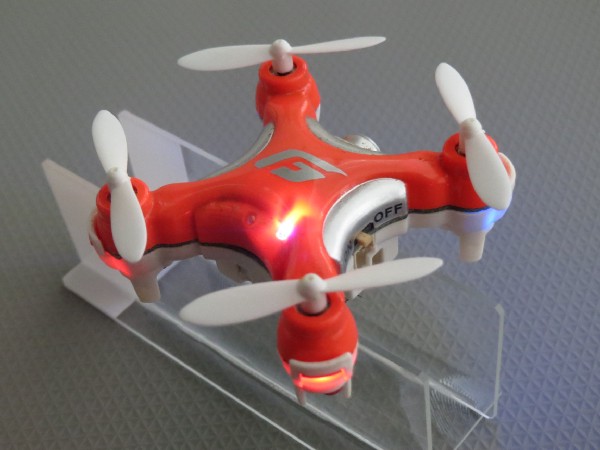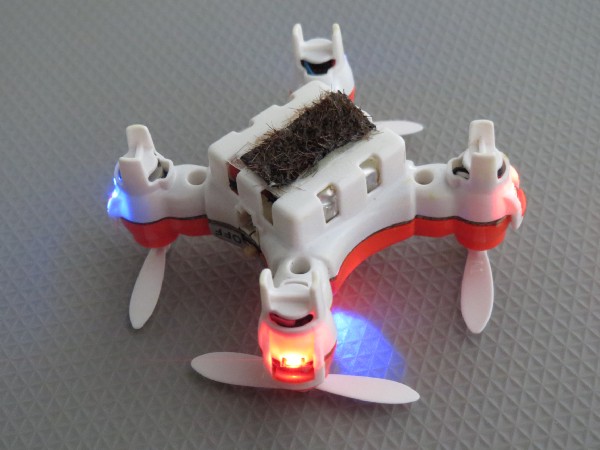Ten years ago, Japanese chemist Eijiro Miyako was trying to invent a liquid that could work as an electrical conductor. But the sticky gel he created failed, so he shoved it into a cabinet in an uncapped bottle and forgot about it. Recently, during a lab cleanup, it was rediscovered — with the viscous stuff unchanged.
Motivated by concerns about climate change and the impact it was having on natural pollinators, especially bees and other insects, Miyako wondered whether the material he had made, still good after a decade, could pick up pollen. Ultimately, he jury-rigged a tiny, insect-sized remote-controlled drone that could carry his substance and use it to pick up and deposit pollen grains.
“I think climate change is one of the terrible problems affecting our natural pollinators,” he says. “Our technology and artificial pollinators could be hopefully promising for giving us a good solution against the pollination crisis for our beautiful planet.”
Globally, an estimated 1,000 plants grown for food, beverages, fibers, spices and medicines must be pollinated by animals, including apples, blueberries, chocolate, coffee, melons, peaches, potatoes, pumpkins, vanilla, almonds and tequila, according to Pollinator Partnership. Pollination by honey bees, native bees and other insects produces $40 billion worth of products annually in the United States, according to the group.
But pollinators have been in trouble in recent years, suffering from habitat loss, chemicals misuse, diseases and parasites, among other hazards. As a result, the nation has lost more than half of its managed honeybee colonies in the last ten years. Research has shown that the effects of global warming are shrinking the geographic home range of North American and European bumblebees, with the insects unable to adapt to the changing conditions.
Before tackling the honeybee problem, Miyako experimented with houseflies and ants.
He put the goop on the ants’ bodies and let them wander inside a box of tulips. Compared with the insects that didn’t have the gel on them, those that did were much more likely to have pollen attached.
Still, to devise an effective artificial pollinator, he needed some kind of flying machine to transport the pollen. He found an insect-sized, remote-controlled four-propeller drone, worth about $100, and attached horse hair to it in order to mimic the fuzzy exterior of a bee.
He and his research colleagues then slathered the gel onto the horse hair bristles so the pollen would stick to it. Furthermore, the horse hair also generates an electric charge that keeps the grains in place.
They flew the little drones — with hair and gel attached — over the flowers of pink-leaved Japanese lilies. The little flyers picked up pollen and the researchers guided them to other flowers, where they deposited the grains, artificially pollinating the plants.
He and his colleagues believe that robotic pollinators ultimately could learn pollination paths via GPS systems and artificial intelligence.
Nevertheless, Miyako acknowledges that much work remains before the tiny drones will have widespread application in agriculture, including improving how the small machines drop the pollen. Once stuck, the grains require some kind of additional physical force to release them.
Thus far, “desorption of pollens possibly happened by hitting materials with piled up pollens onto female flowers,” he says. “Indeed, we have never characterized what kind of forces were actually effected on them. That is a future challenge, to improve the performance for dropping off pollens on our desired plant.”
Miyako, a senior researcher with the Nanomaterials Research Institute of the National Institute of Advanced Industrial Science and Technology in Ibaraki, Japan, described his work in a study published in the journal Chem.
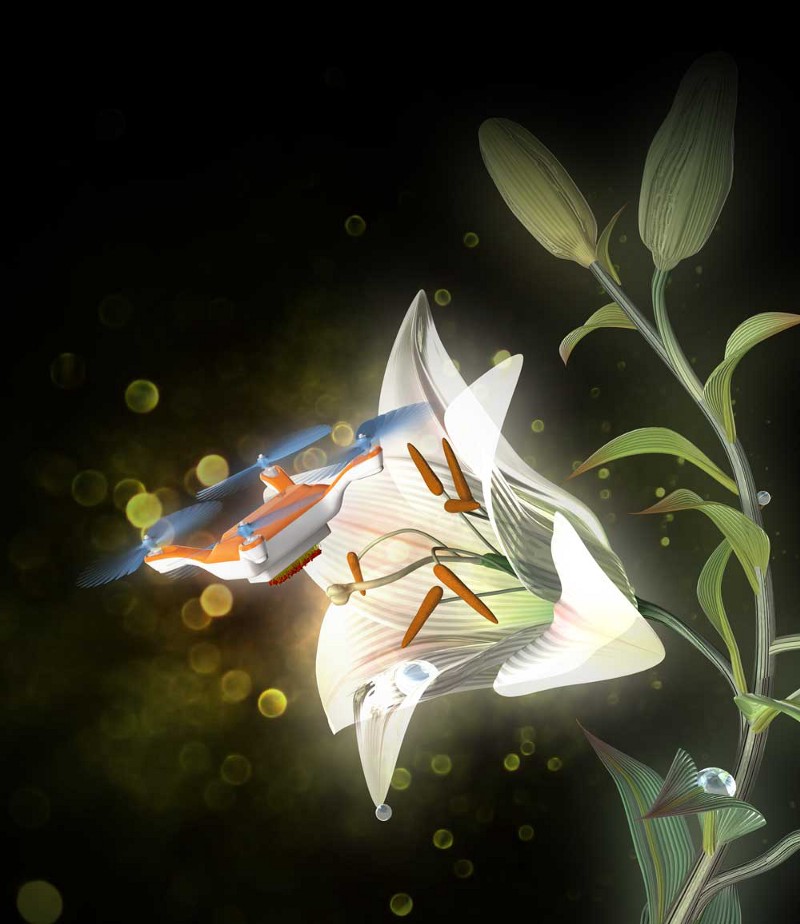
He and his colleagues are the latest in a long history of those who have tried to find ways to help nature with pollination, efforts that go back thousands of years, at least to 2000 BC, when humans pollinated date palms by hand. More recently, people have hand-pollinated tomato flowers in greenhouses and, in some parts of China, apple trees in the absence of native pollinators.
Still, despite the urgency posed by climate change and other threats to insect pollinators, some experts believe artificial methods would be less effective and economically feasible to preserve bee populations. And they worry that attention and resources directed toward artificial pollination technology could discourage efforts to address the impact of global warming on natural pollinators.
“Fortunately, in most cases around the world, the ecosystem service of pollination is provided for free by native insects, so there has been no need to rely on artificial pollination,” says David Inouye, professor emeritus of biology at the University of Maryland, who studies pollination biology and who was not involved in the study. “The new technology is interesting, but it’s likely less expensive to take measures to encourage native pollinators than it will be to use drones.”
Berry J. Brosi, associate professor in the department of environmental services at Emory University, who also was not involved in the research, agrees. “There is the possibility that such technology would reduce the incentives for pollinator conservation,” he says.
Also, mechanical replacement of pollinators, while feasible at small scales, is very unlikely to be economically possible at the levels needed for crop pollination, Brosi says. “Japanese lilies, the plant species that was used for the proof-of-concept of this technology, have very large and showy flowers, in stark contrast to most crops,” he says.
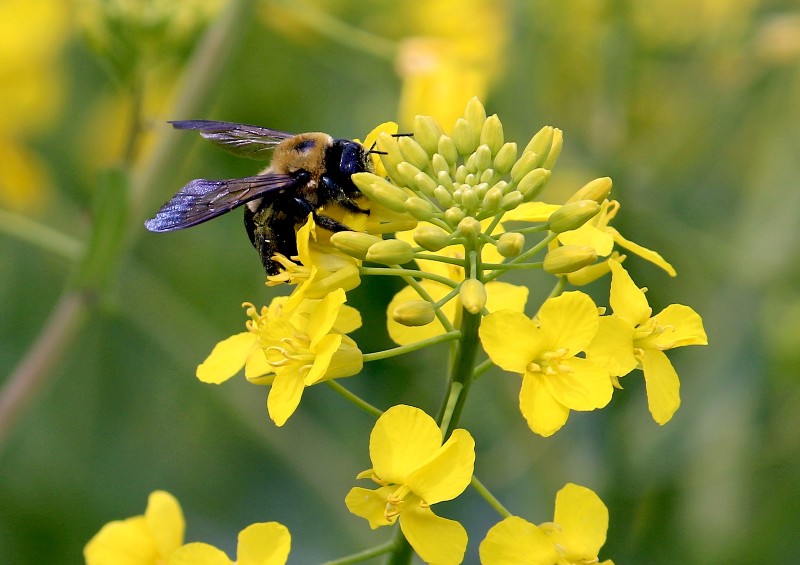
For example, canola, an economically important pollinator-dependent crop, has very small blooms that are clustered together on thin stalks that grow very close together in commercial canola fields, he says. “Current technology for mechanical pollination would have to advance tremendously in a number of dimensions to allow for this much more challenging application,” Brosi says.
Moreover, he adds, replacing living pollinators with mechanical alternatives could produce societal inequities. “Research has shown that pollinator declines are likely to be associated with nutritional deficits in the developing world among smallholders, exactly the population that would almost certainly be unable to afford such technology,” he says.
Beyond their role in crops, insects also pollinate more than 90 percent of wild flowering plants and trees, which in turn provide a range of ecosystem services that people depend upon, “including production of oxygen, water and air purification, prevention of erosion, and scenic beauty among many others,” Brosi says. “Creating a pollinator habitat within or adjacent to crop fields, can provide many other benefits, including providing habitat for natural enemies of crop pests, carbon sequestration, erosion control, and support of plant and other biodiversity.”
The Japanese researchers acknowledge these shortcomings and the obstacles ahead. Nevertheless they hope their continued research will be valuable, even if only to reduce the pressure put on bee populations by commercialization and other stressors.
With help from artificial pollinators, honeybees, for example, might be better able to do one thing the robots can’t — make honey — while drones do the pollinating. Hopefully, the little robots can “help counter the problems caused by declining honeybee populations,” Miyako says.
Marlene Cimons writes for Nexus Media, a syndicated newswire covering climate, energy, policy, art and culture.

